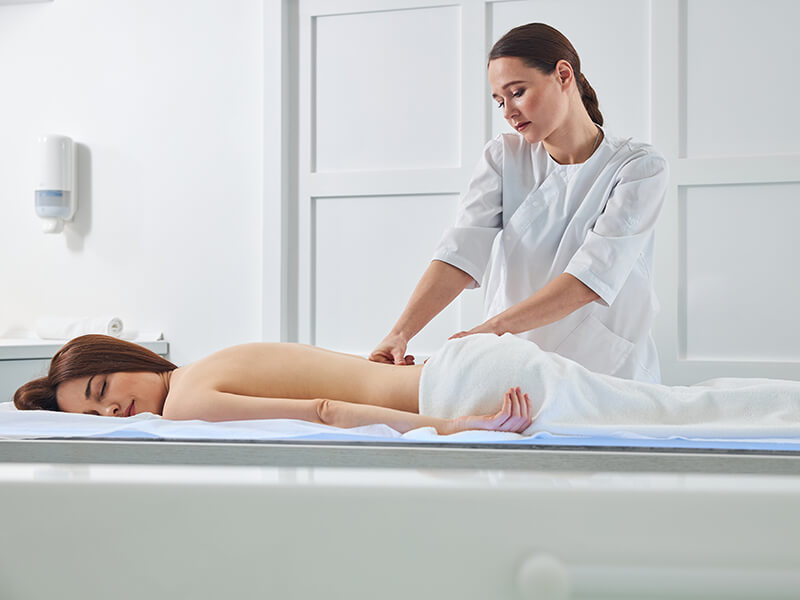Swedish massage is the most common type of massage offered. This form of massage is found in nearly every spa around the world. With soft, long, and kneading strokes, Swedish massage techniques relieve muscle tension and can be either relaxing or invigorating, depending on the pressure and pacing used. Your massage therapist can tailor your massage to your current needs. Swedish massage’s popularity is not only due to its relaxing qualities; it also offers incredible health benefits.
What To Expect
This traditional form of massage requires you to disrobe and lie on a massage table underneath a sheet. Your massage therapist will use a thin, light massage oil with long strokes, kneading motions, and other techniques to manipulate the integumentary (skin) tissues and underlying muscles. The pressure used is mild to moderate, though you can request a firmer touch. This form of massage offers flexibility, so you can request that your massage therapist focus on a specific region of the body and spend more time working on problem areas. Swedish massage appointments typically last 60 minutes, though you may request a 90 minute or 120-minute appointment. Longer appointments mean that special attention can be allocated to the feet, hands, neck, and scalp as well.
Benefits of Swedish Massage
Benefits of Swedish massage include improved circulation, improved blood oxygen levels, lowered cortisol levels, and an increased rate of healing for certain types of injury. This form of massage is also beneficial for conditions like sciatica, osteoarthritis, and chronic pain conditions. You may experience improved flexibility and muscle stamina with routine Swedish massage sessions, as well as improved sleep and lower stress levels.
Contraindications
Persons experiencing fever, infectious or contagious disease, hemophilia, heart disease, and blood clotting disorders should not receive Swedish massage. Those that are undergoing cancer treatment, have severe diabetes, osteoporosis, or other chronic conditions should only receive Swedish massage after consulting their medical care team.
Frequency
To reap the benefits of Swedish massage, you should schedule your appointments 1-2 weeks apart for high-stress careers or lifestyles. For lower-stress lifestyles, 3-4 weeks between appointments should suffice.
Aftercare
After a Swedish massage, you may experience tenderness and inflammation for a few days. Make sure to drink plenty of water and take an Epsom salt bath if possible. Alternating cryotherapy and heat therapy can help reduce swelling and pain. Do not keep ice packs on bare skin for more than twenty minutes at a time, as you may damage your skin. Continue alternating between heat and cold for an hour, then reevaluate. Following your massage, you should focus on rest and hydration. Avoid strenuous activity, caffeinated drinks, and alcohol for 24 hours following your massage. Should you experience significant bruising, you should consult your massage therapist and primary care physician, as this may indicate an underlying health condition.
